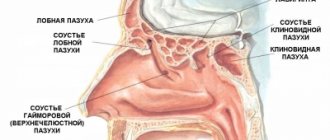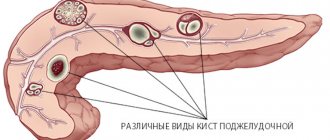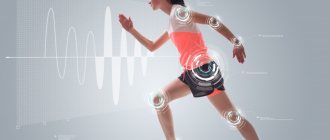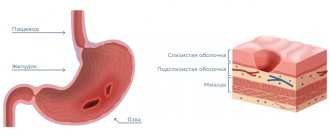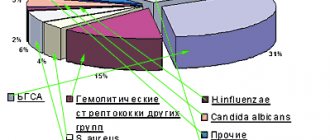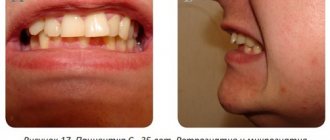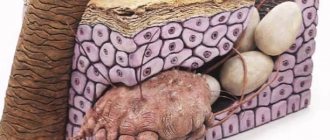All methods of treating snoring, one way or another, come down to stabilizing the tone of the soft tissues of the pharynx or eliminating factors leading to a decrease in the lumen of the airways - it is for these reasons that people snore during sleep. To understand which method will best help and with minimal risks in each specific case, a consultation with a somnologist, and often additional examinations, is necessary. Below you will find information about modern approaches to the treatment of snoring, depending on its origin and associated problems.
Positional therapy
Indications: uncomplicated snoring and positional OSA (i.e., when snoring and apnea episodes occur exclusively during sleep on the back).
Positional therapy is perhaps the only method of treating snoring that can be used without first consulting a specialist. (But this does not exclude the need to visit a somnologist later). A high degree of collapse of the soft structures of the pharynx is most often observed while resting while lying on the back. And the essence of the method is to control the position of the body during sleep. For this purpose, auxiliary devices are used - from special belts to backpacks or ordinary tennis balls sewn into a pajama T-shirt in the back area.
If we are talking specifically about positional snoring and OSA, such therapy can significantly reduce symptoms. But by resorting to this method, a person will wake up every time he tries to turn on his back. This leads to a disruption in the structure of healthy sleep and can cause insomnia, fatigue during the day, and depressive disorders.
Anti-snoring finger ring Anti-snoring - for aesthetics in sleep
— How to use: before going to bed, put it on your little finger with the hole on the back side. — How it works: based on the principle of Chinese acupuncture — it affects active points. - Suitable for: those who feel uncomfortable when there are foreign objects in the mouth or nose - mouthguards, inserts or clips. Can be worn as a stylish accessory.
Drug therapy
Indications: snoring and OSA caused by obesity, as well as narrowing of the airways as a result of allergic or cold-induced swelling.
The existence of effective anti-snoring pills could minimize the need for other treatments. But, unfortunately, the possibilities of drug therapy are limited. Firstly, it is worth understanding that the action of pills and sprays is aimed at snoring, and not at eliminating the causes that cause it.
Therefore, to identify the problem and get a prescription, you cannot do without consulting an ENT specialist or somnologist. Secondly, there are not many problems that provoke snoring that can be solved with the help of medications. We are talking about pills for weight loss, “softening” the throat or relieving swelling of the larynx during colds or allergies. But even in carefully selected groups of patients, the therapeutic effect does not always live up to expectations. And thirdly, most medications have side effects. And often the harm from these drugs exceeds the potential benefits of their use.
IMPORTANT TO UNDERSTAND! Most drugs that are positioned as a cure for snoring are not pharmacological agents, but biologically active additives based on herbal components. In view of this, the requirements for evidence regarding their effectiveness are significantly reduced. In addition, for many of them, OSA is a strict contraindication.
Diagnostics
Only a qualified ENT specialist can correctly identify snoring, the causes of its occurrence, and also correctly relieve the patient from the potential danger associated with the development of obstructive apnea syndrome. Doctors at our clinic conduct a comprehensive examination, including:
- detailed medical history;
- examination using video endoscopic equipment (to accurately determine possible internal pathologies of the nasopharynx);
- instrumental examination through respiratory monitoring with pulse oximetry using SOMNOcheckmicro (this small device is attached to the wrist before bed, it records the frequency of snoring, pulse and the percentage of oxygen saturation of the blood).
Intraoral applicators
Indications: uncomplicated snoring, positional snoring and OSA, mild to moderate OSA.
Intraoral devices (applicators, mouth guards, splints) are another simple, but not always effective way to treat snoring. Depending on the mechanism of action on the movable structures of the pharynx, they are divided into two groups - for moving the lower jaw forward and for holding the root of the tongue. Unfortunately, the effectiveness of devices of the second type is still unproven.
The purpose of the applicator is to move the lower jaw forward, thereby increasing the lumen of the pharynx. But, the therapeutic effect will be provided only by custom-made mouthguards taking into account the individual characteristics of the patient’s jaw structure. This is why you will be disappointed when purchasing ready-made solutions at a pharmacy: you will not get the desired result, but will only throw money down the drain.
Why is OSA syndrome dangerous?
Snoring and obstructive apnea in adults should be treated as soon as possible, since such pathological conditions lead to a person being left without oxygen for a long time. During periods without breathing, the condition of all tissues (including the brain and heart) seriously deteriorates. In addition, sleep does not bring the necessary rest.
As a result, a person becomes lethargic, irritable, suffers from headaches, mood changes, cannot concentrate, and risks falling asleep while driving. In severe cases, the syndrome reduces overall life expectancy.
Anti-snoring patches and clips
Indications: snoring caused by difficulty breathing through the nose.
Another way to enrich pharmaceutical companies is by purchasing anti-snoring patches and clips. Their popularity in the medical goods market is not explained by their magical properties, but only by the talent of the marketers who promote them. The only case when these remedies can help at least a little is snoring due to difficulty breathing through the nose (for example, during a cold). To justify these remedies, we can say that at least they do not harm the body. Although this is a rather controversial point. Their use prolongs the period of combating snoring. But, if you are dealing with sleep apnea, every day you fight against this disease is an additional risk to your health.
Nose insert Anti-snoring - for difficult nasal breathing
— How to use: insert into the nose before going to bed and remove after waking up. — How it works: it expands the nasal passages and “allows” air into the respiratory tract. — Who is it suitable for: those who, for some reason, have impaired nasal breathing: respiratory disease, deviated nasal septum, swelling of the mucous membrane, excess weight.
Surgical treatment of snoring
Indications: uncomplicated snoring and mild to moderate apnea caused by pathology of the soft structures of the pharynx, congenital anomalies of the jaw structure, as well as pronounced obesity.
Many people perceive surgical treatment of snoring as an opportunity not just to quickly, but to get rid of the problem once and for all. However, surgery can only in rare cases be considered a self-sufficient method. Agreeing to go under the surgeon’s knife means subjecting the body to enormous stress. Before consenting to invasive intervention, it is important to soberly assess all the risks, including:
- load on the cardiovascular and respiratory systems during anesthesia;
- recovery after surgery;
- bleeding from the wound;
- the possibility of infection in the wound;
- probability of relapse, etc.
Please note that severe OSA is a strict contraindication for surgery. In the first days after surgery, the patient takes painkillers, which not only relieve pain, but also help to relax and induce deep sleep. But, if the problem of collapse of the soft structures of the pharynx has not been solved, then a decrease in muscle tone can lead to multiple episodes of apnea and acute oxygen deficiency. With increasing hypoxia, heart rhythm disturbances occur and the risk of postoperative heart attacks and strokes increases.
Kappa Anti-Snoring - you can regulate breathing: nose - mouth
— How to use: before use, “brew” it in boiling water to soften it, and then insert it into your mouth. — How it works: it slightly holds the tongue, preventing it from sinking, and tones the soft palate. — Who is it suitable for: those with narrow respiratory passages and those who snore due to tongue sinking. Cannot be used by children and people who suffer from apnea.
Radio wave method and laser treatment of snoring
Indications for laser therapy: uncomplicated snoring caused by the pathological structure of the tissues of the soft palate. Indications for radio wave therapy: uncomplicated snoring, mild (in rare cases moderate) degree of apnea caused by the pathological structure of the tissues of the soft palate.
Laser uvulopalatoplasty
In addition to traditional surgery, modern medicine offers laser and radio wave methods for treating snoring by removing the uvula along with part of the soft palate. Most likely, you have more than once come across advertising offers to quickly, painlessly and bloodlessly get rid of the “voiced” dream. However, when it comes to advertising services, you can’t believe everything that is promised to you.
When treating snoring with a laser (laser uvulopalatoplasty), a superficial burn is formed, which after a while turns into a scar and may be accompanied by hardening of the soft palate. In other words, by getting rid of one cause of snoring, we provoke the development of another. However, sleep apnea is a contraindication for laser surgery. According to statistics, in almost half of patients with OSA, after these manipulations, apnea moved to a more serious stage. In addition, not a single advertising brochure offering laser treatment services for snoring mentions such side effects as narrowing of the pharynx, nasal voice, breathing problems, etc.
Radio wave treatment of snoring is reduced to thickening and reducing the volume of the soft tissues of the pharynx. Unlike laser therapy, during this manipulation a scar is formed under the mucosa, inside the tissues themselves. Therefore, the operation is easier to tolerate and is accompanied by a minimum number of side effects. However, the indications for this procedure are also limited.
Mechanism of apnea development
During sleep, the tone of the muscles and soft tissues of the tongue, nasopharynx, larynx and pharynx decreases. In the presence of anatomical prerequisites (dental features, short neck, excess weight, etc.), endocrine and neurological pathologies, soft tissues collapse when immersed in the deep sleep phase. This results in a significant reduction or complete cessation of air flow. The person stops breathing. At the same time, the brain receives a distress signal and ensures awakening before the shallow sleep phase. This provokes shuddering, loud and sharp snoring and resumption of breathing. But breathing stops repeat again and again when the person falls back into deep sleep.
All this leads to:
- constant lack of oxygen
- lack of adequate sleep
- inability to rest well and recuperate
Hypoglossal nerve stimulation
Indications: OSA caused by weak soft tissue tone in the posterior parts of the pharynx.
Another way to reduce the risk of obstruction at the pharyngeal level is to subcutaneously implant a pulse generator in the subclavian region. The device increases muscle tone through weak electrical stimulation of the hypoglossal nerve. Implantation takes 1-1.5 hours. The battery life is 15 years. The generator is replaced under local anesthesia.
However, many patients perceive implantation of a foreign body even more critically than traditional surgery. However, such manipulation helps only a small proportion of patients with OSA. And due to the lack of long-term studies, the pathophysiology of the therapeutic effect itself requires further detailed analysis.
Terminology
Selective surgical interventions on the palate include techniques such as surgery, laser plastic surgery, radiofrequency plastic surgery, injection methods and cryoplasty. The above methods are based on the principle of causing trauma to the palate of varying intensity
. During healing, the soft palate usually decreases in volume and thickens. The uvula is partially or completely removed. Thus, snoring can be eliminated or reduced, because the mobility of the structures of the soft palate is reduced.
